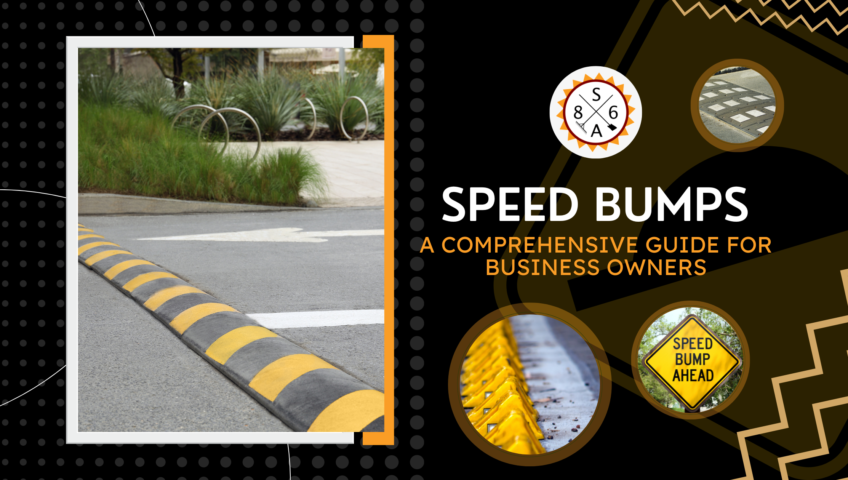
Speed Bumps: A Comprehensive Guide for Business Owners
Speed bumps are an essential part of traffic management, particularly in areas with high pedestrian traffic or where vehicle speed needs to be controlled for safety. For business owners, installing speed bumps can significantly improve the safety and accessibility of their premises. This comprehensive guide will provide insights into the benefits, types, installation process, and maintenance of speed bumps, with a special focus on the role of asphalt companies in ensuring quality and durability.
Benefits of Speed Bumps
Enhancing Safety
The primary benefit of speed bumps is the enhancement of safety. Speed bumps effectively reduce vehicle speeds, making it safer for pedestrians and cyclists. In areas such as parking lots, schools, and residential streets, where foot traffic is high, speed bumps are crucial in preventing accidents.
Controlling Traffic Flow
Speed bumps help in controlling the flow of traffic. By slowing down vehicles, they reduce the risk of collisions and ensure that drivers remain attentive. This is particularly important in commercial areas where vehicles and pedestrians frequently interact.
Improving Property Value
For business owners, improving the safety and appearance of their property can increase its value. A well-maintained property with appropriate traffic calming measures is more attractive to customers and clients. This can enhance the business’s reputation and potentially lead to higher revenue.
Types of Speed Bumps
Asphalt Speed Bumps
Asphalt speed bumps are the most common type used in commercial and residential areas. They are durable, cost-effective, and blend seamlessly with the existing pavement. Asphalt speed bumps are ideal for areas where permanent traffic control is needed.
Rubber Speed Bumps
Rubber speed bumps are flexible and can be installed quickly. They are often used in temporary settings or in areas where a less permanent solution is required. Rubber speed bumps are also environmentally friendly as they are often made from recycled materials.
Plastic Speed Bumps
Plastic speed bumps are lightweight and easy to install. They are resistant to weather conditions and can be a good option for areas with heavy rainfall or extreme temperatures. However, they may not be as durable as asphalt or rubber speed bumps.
Installation Process
Site Assessment
Before installing speed bumps, a thorough site assessment is necessary. This involves evaluating the traffic patterns, speed limits, and pedestrian activity in the area. The assessment helps in determining the optimal locations for speed bumps to maximize their effectiveness.
Choosing the Right Material
Choosing the right material for speed bumps depends on various factors such as traffic volume, weather conditions, and budget. Asphalt companies can provide expert advice on the most suitable material based on the specific needs of the business.
Installation by Professionals
Installing speed bumps requires precision and expertise. Professional asphalt companies have the necessary equipment and skills to ensure that speed bumps are installed correctly. This includes preparing the site, laying the material, and ensuring that the speed bumps are of the correct height and width.
Compliance with Regulations
It is important to ensure that the installation of speed bumps complies with local regulations and standards. Professional asphalt companies are well-versed in these regulations and can ensure that the installation meets all legal requirements.
Maintenance and Longevity
Regular Inspections
Regular inspections are essential to ensure that speed bumps remain effective. Over time, wear and tear can cause damage to speed bumps, reducing their effectiveness. Regular inspections help in identifying any issues early and taking corrective action.
Repairs and Resurfacing
Asphalt speed bumps may require occasional repairs or resurfacing to maintain their functionality. Asphalt companies offer maintenance services that include filling cracks, sealing surfaces, and resurfacing damaged areas. This helps in extending the lifespan of speed bumps and ensuring their continued effectiveness.
Cleaning and Debris Removal
Keeping speed bumps clean and free from debris is important for their effectiveness. Regular cleaning prevents the accumulation of dirt and debris, which can reduce the visibility and functionality of speed bumps.
Enhance the Safety and Accessibility
For business owners, installing speed bumps is a practical and effective way to enhance the safety and accessibility of their property. By understanding the benefits, types, installation process, and maintenance requirements of speed bumps, business owners can make informed decisions that contribute to the safety and success of their business. Partnering with a professional asphalt company ensures that speed bumps are installed correctly and maintained to the highest standards, providing long-term benefits for both the business and its customers.
